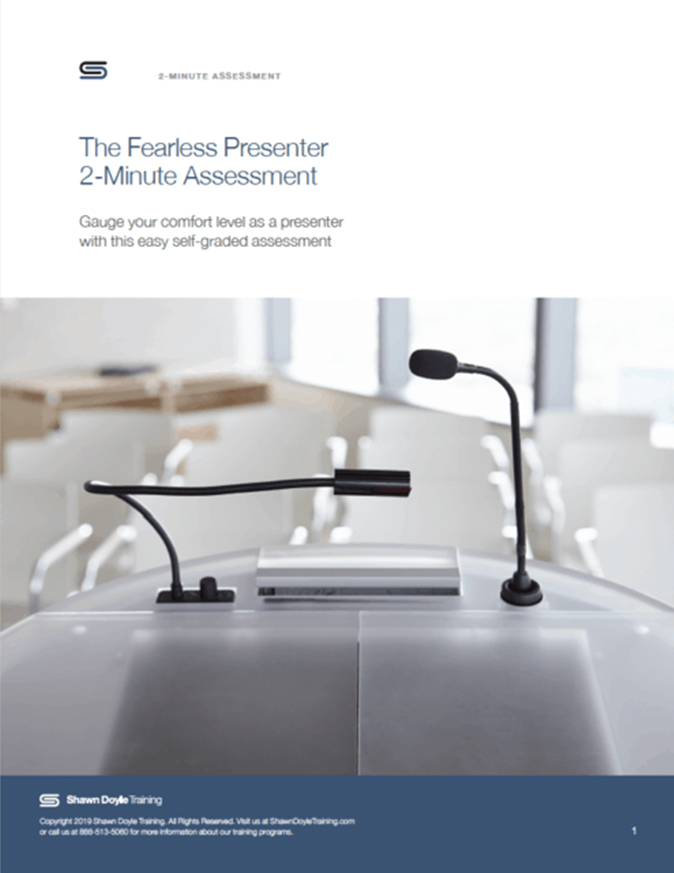Blog

5 Ways To Master Body Language Techniques for Public Speaking
Studies have shown that nonverbal communication can account for up to 93% of the total impact of your presentation. Your body language, including gestures, posture, facial expressions, and eye contact, play a crucial role in how effectively you communicate a message to your audience.
When used effectively, body language can help you connect with your audience, emphasize key points, convey emotions and your enthusiasm for your topic. On the other hand, poor body language can undermine your credibility, distract from your message, and leave your audience feeling disconnected or uninterested.
In this article, we’ll explore the power of body language in public speaking, and the tools and techniques you need to become a more confident, engaging, and effective communicator.
The 5 Techniques For Masterful Public Speaking
The five most important factors that successful public speakers focus on are eye contact, posture, hand gestures, facial expressions, and movement.

Eye Contact
Maintaining eye contact with your audience is one of the most important body language techniques for public speakers. Eye contact establishes a sense of connection and engagement, making your audience feel like you’re speaking directly to them. To effectively use eye contact, try to hold eye contact with individual audience members for 3-5 seconds before moving on to someone else. This can help create a sense of intimacy and make your audience feel more invested in your message. However, make sure you vary your eye contact and scan the entire room, so you don’t appear to be staring at or ignoring certain audience members.
Posture
Your posture can convey a lot about your confidence, authority, and engagement with your audience. To project confidence, stand tall with your feet shoulder-width apart, your shoulders back, and your head held high. Keep your arms relaxed at your sides or use them to make gestures, but avoid crossing them in front of your body, as this can make you appear closed off or defensive. If you’re sitting, sit up straight and lean slightly forward to show engagement and interest.
Gestures
Using hand gestures emphasizes key points, adds visual interest, and makes your presentation more dynamic. It’s important to use gestures purposefully and avoid overdoing them, otherwise you can be distracting or appear insincere. Some effective gestures include open palm gestures to convey honesty and transparency, counting gestures to enumerate points, and descriptive gestures to help illustrate concepts or ideas. Keep your gestures within the “gesture box” (the area from your waist to your shoulders) to avoid appearing too expansive or distracting.
Facial Expressions
Your facial expression can convey a wide range of emotions and help reinforce your message. Smiling creates a positive and welcoming atmosphere, while using serious or concerned expressions can convey the gravity or importance of your message. It’s important to keep your facial expressions authentic and congruent with your words and tone of voice. Avoid negative facial expressions, such as frowning or scowling, as these can make you appear angry, disapproving, or unapproachable.
Movement
Using purposeful movement can help engage your audience and make your presentation more dynamic. Moving around the stage or walking towards your audience creates a sense of energy and enthusiasm, while standing still can convey calm and authority. It’s important to use movement purposefully and avoid pacing, fidgeting, or other distracting movements. When moving, be sure to maintain an open posture and keep your movements smooth and controlled.
By mastering these key body language techniques, you can become a more confident, engaging, and effective public speaker. Remember, practice makes perfect, so be sure to rehearse your presentation and pay attention to your body language to identify areas for improvement.
Common Body Language Mistakes to Avoid

While mastering positive body language techniques is crucial for effective public speaking, it’s equally important to be aware of common body language mistakes that can undermine your message and credibility. Here are some of the most frequent pitfalls to avoid:
- Fidgeting: Playing with your hair or adjusting your clothing can be distracting and make you appear nervous.
- Crossing your arms: This can make you appear defensive or closed off.
- Poor eye contact: Avoiding eye contact can make you seem disengaged or insincere.
- Stiff posture: Standing too rigidly can make you appear tense or unapproachable.
- Monotone voice: Speaking in a monotone can make your presentation feel flat and uninteresting.
- Inappropriate facial expressions: Inconsistent facial expressions can create confusion and undermine your credibility.
By consciously avoiding these mistakes, you can ensure your nonverbal cues enhance your effectiveness as a speaker.
Master Public Speaking With The Presentation Power Webinar
By understanding nonverbal communication, using positive techniques, and avoiding common mistakes, you can connect with your audience and deliver your message with more impact than ever before.
If you found the tips in this article useful, then you’ll love our exclusive 15-minute webinar with Shawn Doyle, an experienced public speaking expert. In just 15 minutes, you’ll learn his top tips for mastering memorable, high-impact speaking—the same elite training he provides to Fortune 500 clients.
By joining this webinar, you’ll discover how to grab attention, structure presentations for persuasion, exude confidence, tell inspiring stories, and handle Q&As like a pro. You’ll also hear from satisfied clients who have transformed their presentation skills and executive presence.
Don’t miss this opportunity to invest in yourself and your career. Reserve your spot today FOR FREE and unlock your full potential as a public speaker. With the skills and confidence you’ll gain, you’ll be well-equipped to communicate with impact and achieve your goals.
JOIN THE WEBINAR now and take the first step towards becoming a master communicator!







